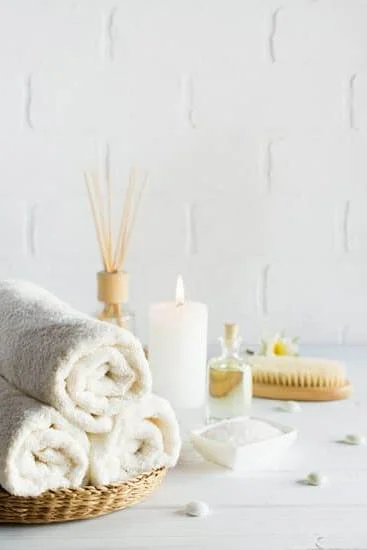Aromatherapy has been used for centuries as a natural way to promote relaxation, improve mood, and alleviate various ailments. One of the most popular essential oils in aromatherapy is lavender, known for its calming and soothing properties. However, there is another variety of lavender known as French lavender that offers similar but distinct benefits. In this article, we will explore the key differences between lavender and French lavender essential oils and how they can be used in aromatherapy.
Lavender essential oil is derived from the Lavandula angustifolia plant, while French lavender essential oil comes from the Lavandula dentata plant. Both varieties have unique properties and benefits that make them valuable additions to any aromatherapy practice. Understanding the differences between these two types of lavender can help you choose the right one for your specific needs.
In addition to discussing the differences between lavender and French lavender essential oils, we will also delve into their history and origins, as well as explore their aromatherapeutic uses and benefits. We will compare their scent profiles, examine how they are produced and harvested for their essential oils, and highlight the importance of choosing high-quality and pure products for maximum therapeutic effects.
Whether you are new to aromatherapy or looking to expand your knowledge on essential oils, this article will provide valuable insights into incorporating lavender and French lavender into your daily practice.
Understanding the Varieties
French Lavender, also known as Lavandula Dentata, is a variety of lavender that has a more distinct gray color and toothed leaves. It is native to the Mediterranean region and is widely cultivated in France. On the other hand, Lavender, or Lavandula Angustifolia, is the most commonly used type of lavender in aromatherapy and is known for its sweet floral aroma.
The primary difference between lavender and French lavender lies in their scent profiles. While both varieties have a floral and herbaceous aroma, French lavender is often described as having a sharper, more camphoraceous scent compared to the sweeter and softer fragrance of traditional lavender. This difference in scent can influence their therapeutic uses and benefits in aromatherapy practice.
When it comes to their production and harvesting processes, both lavender and French lavender essential oils are extracted through steam distillation from the fresh flowers of the plants. However, due to differences in climate, soil conditions, and altitude where they are cultivated, the chemical composition of their essential oils may vary. This variation can impact the purity and quality of the essential oils produced.
In choosing between lavender and French lavender essential oils for aromatherapy practice, it’s important to consider the specific therapeutic benefits each variety offers. While lavender essential oil is prized for its calming and relaxing properties, French lavender essential oil is often favored for its ability to soothe muscular discomfort and promote respiratory health. Ultimately, understanding these differences can help individuals make informed choices when incorporating these essential oils into their aromatherapy regimen.
| Property | Lavender | French Lavender |
|---|---|---|
| Scent Profile | Sweet floral aroma | Sharper, more camphoraceous scent |
| Therapeutic Benefits | Calming and relaxing properties | Soothes muscular discomfort and promotes respiratory health |
History and Origins of Lavender and French Lavender
Lavender and French lavender are two popular essential oils used in aromatherapy, but what is the difference between the two? To understand their origins, we must first look at their history. Lavender, known for its calming and soothing properties, has been used for centuries in various cultures for its medicinal and aromatic benefits. It is native to the Mediterranean region and has been prized for its fragrance and healing properties.
French lavender, on the other hand, also known as lavandin, is a hybrid of true lavender and spike lavender. It is cultivated in France and contains higher levels of camphor, giving it a more intense scent compared to traditional lavender. French lavender was created in the 18th century when it was discovered that cross-breeding these two species produced a plant with a stronger aroma and higher yields.
Both lavender and French lavender have unique histories that have evolved over time. They were traditionally used for medicinal purposes before becoming popular in aromatherapy practices. Understanding their origins can help us appreciate the long-standing tradition of using these essential oils for health and wellness.
When considering the historical context of these essential oils, it becomes clear that both have been cherished for centuries due to their unique qualities and benefits – from promoting relaxation to supporting overall well-being.
| Lavender | French Lavender |
|---|---|
| Native to the Mediterranean region | Cultivated in France |
| Prized for fragrance and healing properties | Hybrid of true lavender and spike lavender |
| Used for centuries in various cultures | Created in the 18th century through cross-breeding |
Different Aromatherapeutic Uses and Benefits of Lavender and French Lavender
When it comes to aromatherapy, both lavender and French lavender essential oils offer a wide range of therapeutic benefits. Lavender essential oil is well-known for its calming and relaxing properties, making it popular for reducing stress and anxiety. It is also used to promote better sleep and alleviate headaches. On the other hand, French lavender essential oil is often used for its antimicrobial and anti-inflammatory effects, making it a great choice for skincare and wound healing.
One of the key differences in the aromatherapeutic uses of lavender and French lavender lies in their chemical composition. Lavender essential oil contains high levels of linalool, which contributes to its soothing and sedative effects.
This makes it an ideal choice for addressing emotional concerns, such as anxiety and insomnia. On the other hand, French lavender essential oil contains higher levels of camphor, giving it stronger pain-relieving and anti-inflammatory properties that make it beneficial for relieving muscle pain and inflammation.
Both lavender and French lavender essential oils have been traditionally used to promote overall well-being. Lavender is known for its ability to ease tension, while French lavender is valued for its ability to accelerate healing in minor wounds and relieve skin irritations. Additionally, both oils are believed to have antibacterial properties that can help ward off infections when used in aromatherapy or applied topically.
Scent Profiles
When it comes to aromatherapy, the scent of essential oils plays a crucial role in their therapeutic effects. Both lavender and French lavender essential oils are popular choices for aromatherapy, each with their own distinct aroma profiles. Understanding the differences in their scents can help you choose the right essential oil for your specific needs.
Lavender Aroma Profile
Lavender essential oil is known for its sweet, floral, and herbaceous aroma. It has a balanced scent that is often described as calming and soothing. The aroma of lavender essential oil is widely used in aromatherapy to promote relaxation, reduce stress and anxiety, and improve sleep quality. Its versatile scent also makes it a popular choice for blending with other essential oils.
French Lavender Aroma Profile
On the other hand, French lavender essential oil has a slightly different aroma profile compared to regular lavender. It has a more complex scent with floral, woody, and herbal notes. French lavender essential oil is often described as having a more intense and sharper fragrance compared to traditional lavender. Its invigorating aroma makes it an excellent choice for uplifting mood, easing headaches, and supporting overall well-being.
Understanding the subtle differences in the scent profiles of lavender and French lavender essential oils can help you make an informed decision when incorporating them into your aromatherapy practice. Whether you are seeking relaxation or a mood boost, choosing the right essential oil with the appropriate aroma can enhance the effectiveness of your aromatherapy experience.
Production and Harvesting
When it comes to the production and harvesting of lavender and French lavender essential oils, there are specific methods that are used to extract these highly sought-after oils. Both lavender and French lavender essential oils are extracted from the flowers of the plants through a process known as steam distillation. This process involves the use of steam to separate the essential oil from the plant material, resulting in a highly concentrated and potent oil.
To extract lavender essential oil, the flowers of the Lavandula angustifolia plant are harvested when they are in full bloom. The flowers are then placed in a large distillation chamber where they are exposed to steam. As the steam passes through the plant material, it carries the essential oil out of the flowers and into a condensation chamber, where it is collected and separated from the water.
Similarly, French lavender essential oil is also extracted using steam distillation. However, this variety comes from Lavandula dentata plants, which have a slightly different chemical composition and aroma compared to traditional lavender. The flowering tops of these plants are harvested and subjected to steam distillation to extract their fragrant essential oil.
In both cases, it is important for producers to carefully monitor factors such as temperature and pressure during the distillation process to ensure that the resulting oils maintain their purity and therapeutic properties. Proper harvesting techniques and careful extraction methods are crucial in producing high-quality lavender and French lavender essential oils.
Quality and Purity
When it comes to choosing the right lavender and French lavender essential oils for aromatherapy, quality and purity are key factors to consider. The quality and purity of the essential oils can greatly influence their effectiveness in aromatherapeutic practices. Therefore, it is important to understand how to identify high-quality lavender and French lavender essential oils for optimal results.
Factors Affecting Quality and Purity
Several factors can affect the quality and purity of lavender and French lavender essential oils. These include the origin of the plants, cultivation methods, extraction processes, and storage. It is important to look for essential oil brands that prioritize sustainable farming practices, use organic or wildcrafted plants, employ proper distillation techniques, and store their oils in dark glass bottles to preserve their integrity.
Choosing the Right Lavender Essential Oil
When selecting a lavender essential oil for aromatherapy, it is important to look for one derived from Lavandula angustifolia, also known as true lavender. This variety is highly regarded for its calming and soothing properties. In addition, opt for essential oils that are labeled as “100% pure” or “therapeutic grade” to ensure that they have not been diluted or adulterated with synthetic substances.
Selecting French Lavender Essential Oil
French lavender essential oil is derived from Lavandula dentata or Lavandula stoechas, both of which have slightly different aromatic profiles compared to true lavender. When choosing a French lavender essential oil, be sure to consider its specific therapeutic benefits such as its potential for respiratory support or aiding in relaxation. Look for reputable brands that provide detailed information about the source and production methods of their French lavender essential oil.
By understanding the importance of quality and purity in choosing lavender and French lavender essential oils for aromatherapy, you can make informed decisions when incorporating these powerful plant extracts into your holistic wellness routine.
How to Incorporate Lavender and French Lavender Essential Oils Into Your Aromatherapy Practice
When it comes to incorporating lavender and French lavender essential oils into your aromatherapy practice, there are numerous methods and techniques that can be utilized. Both oils have unique therapeutic properties that can help promote relaxation, relieve stress, and improve overall well-being.
One common way to use lavender and French lavender essential oils is through inhalation. This can be achieved by adding a few drops of either oil to a diffuser or humidifier, allowing the aroma to fill the air. Alternatively, you can add a few drops to a bowl of hot water and inhale the steam, or create a homemade room spray using lavender or French lavender oil for a quick burst of calming fragrance.
Another popular method for incorporating these essential oils into your aromatherapy practice is through topical application. Lavender and French lavender oils can be diluted with a carrier oil, such as coconut or jojoba oil, and applied directly to the skin for massage or added to bathwater for a soothing soak. This method allows for direct absorption of the oil’s beneficial properties through the skin.
For those interested in using lavender or French lavender essential oil in their aromatherapy practice, it’s important to note that both oils should be used with caution and in moderation. Due to their potency, it’s recommended to consult with a qualified aromatherapist or healthcare professional before incorporating these oils into your routine, especially if you are pregnant, nursing, or have any underlying health conditions.
Conclusion
In conclusion, when it comes to choosing the right essential oil for your aromatherapy needs, both lavender and French lavender offer a range of benefits and uses. Lavender essential oil is known for its calming and soothing properties, making it a popular choice for promoting relaxation and relieving stress. On the other hand, French lavender essential oil is prized for its slightly sweeter aroma and is often used in skincare products and for promoting sleep.
It is important to note that while both varieties have similar benefits, they also have distinct scent profiles that can be preferred based on personal preferences. The differences between the two oils lie in their chemical composition, which impacts their therapeutic properties. Understanding these differences can help individuals make an informed decision when incorporating these essential oils into their aromatherapy practice.
When it comes to selecting the right lavender or French lavender essential oil, purity and quality are crucial factors to consider. Look for reputable suppliers who provide high-quality, organic products to ensure that you are getting the most benefits from these powerful essential oils. Whether you choose lavender or French lavender, both options can elevate your aromatherapy practice and provide numerous wellness benefits. Ultimately, the choice between these two varieties will depend on individual needs and scent preferences.
Frequently Asked Questions
Is French Lavender the Same as Lavender?
French Lavender, also known as Lavandula dentata, is not the same as traditional Lavender or Lavandula angustifolia. While both belong to the same family, they have different characteristics and scents.
What Is the Best Lavender for Aromatherapy?
The best lavender for aromatherapy is typically considered to be Lavandula angustifolia, also known as English Lavender or True Lavender. This type of lavender has a sweet floral scent and is known for its calming and relaxing properties, making it ideal for aromatherapy use.
What Are the Two Types of Lavender Oil?
The two main types of lavender oil are Spike Lavender (Lavandula latifolia) and True Lavender (Lavandula angustifolia). Spike lavender oil has a stronger scent and is often used for its antiseptic properties, while True Lavender oil is prized for its calming and soothing effects. Both oils have their own unique uses and benefits in aromatherapy and natural medicine.

Are you looking for a natural way to improve your health and wellbeing?
If so, aromatherapy may be the answer for you.





